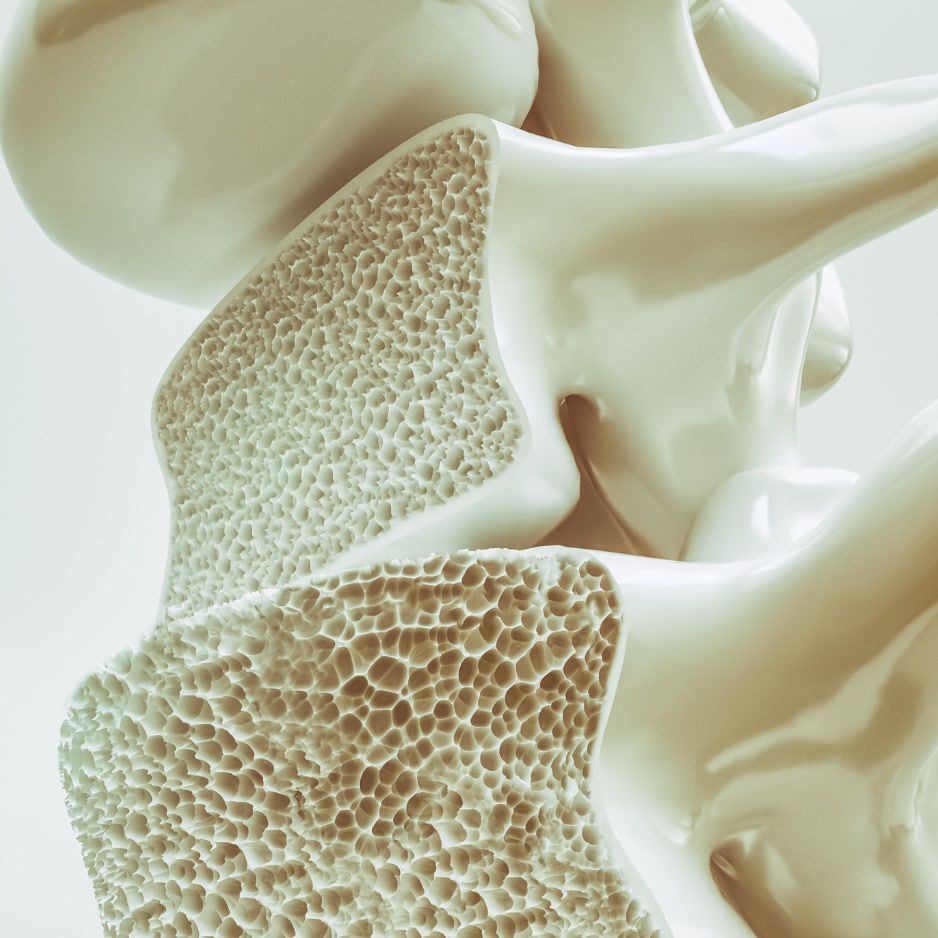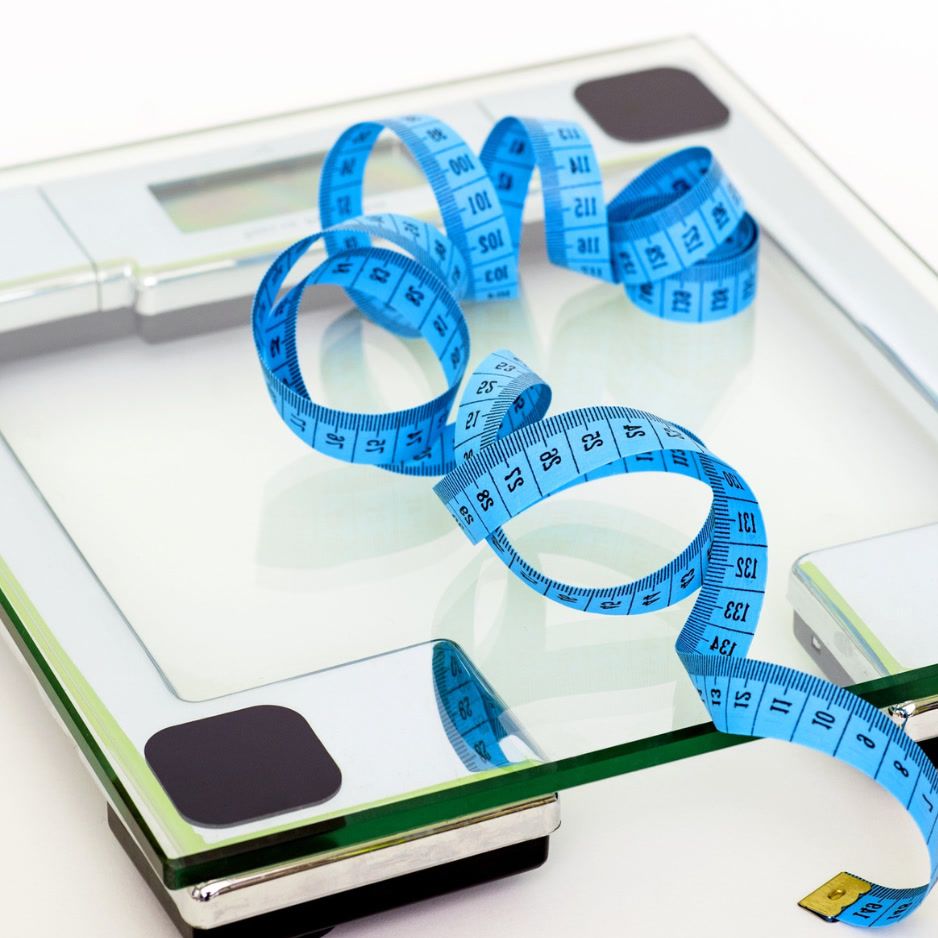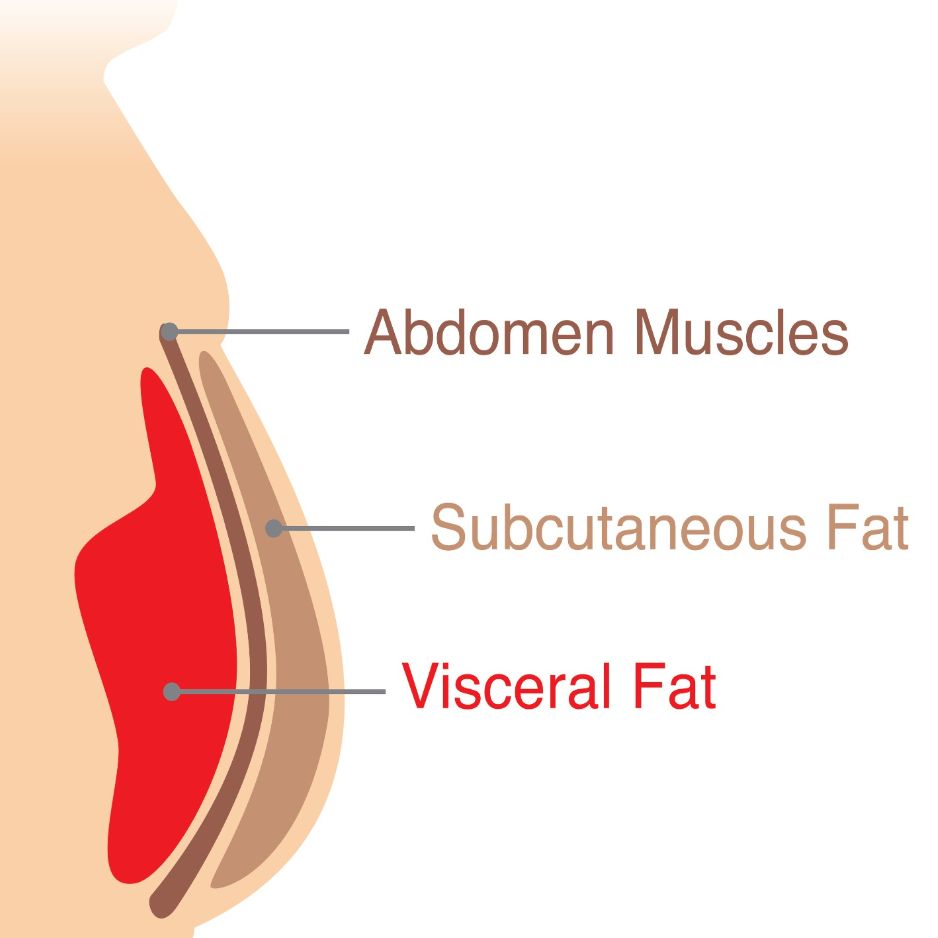How to Hydrate Fast: A Guide to Rapid Rehydration
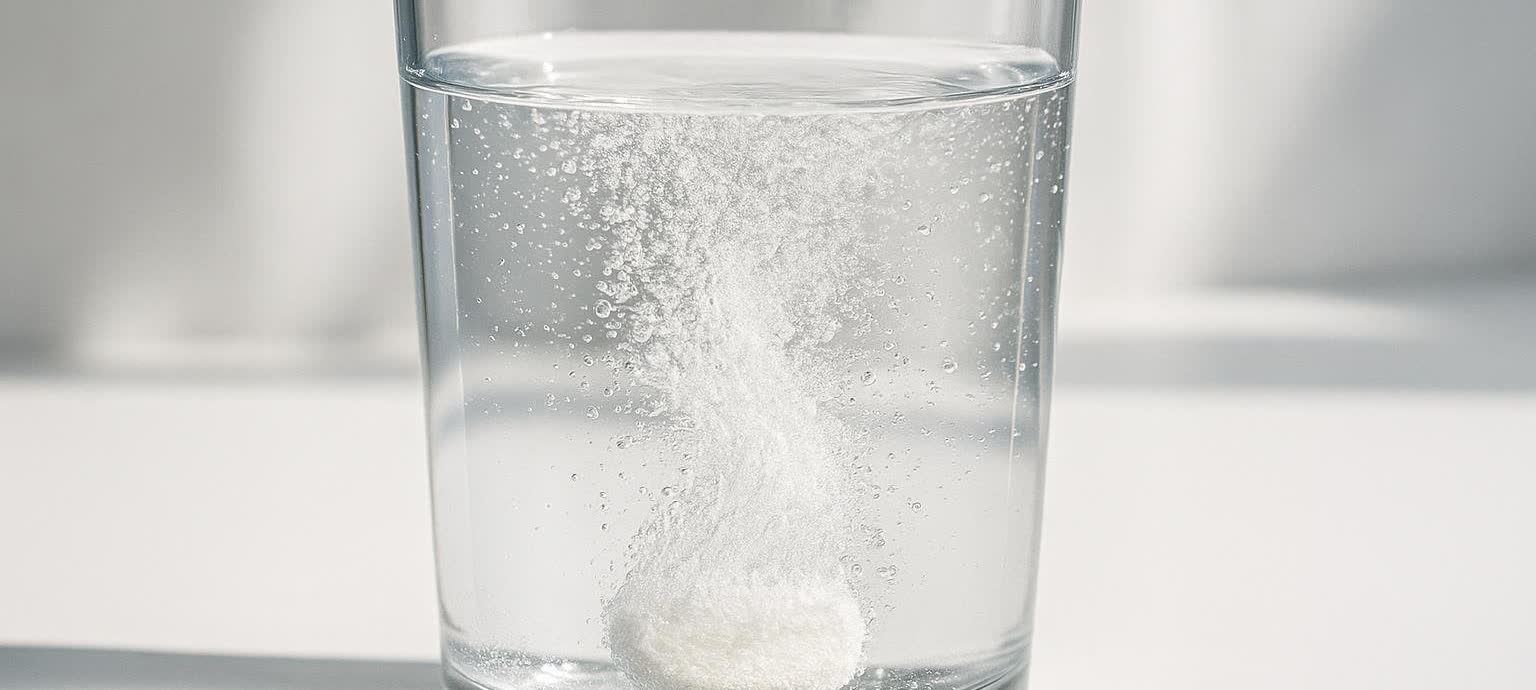
How to Hydrate Fast: A Guide to Rapid Rehydration
Dehydration can strike after a summer long-run, a cross-country flight, a stomach bug, or a hangover. Whatever the trigger, you probably have one question on your mind: How do I rehydrate—fast?
This guide distills the latest research, World Health Organization (WHO) formulas, and sports-medicine best practices into a simple, timed protocol you can start using today.
Quick Take (TL;DR)
| Do This | Why It Works | How Fast?* |
|---|---|---|
| Sip 5–7 mL/kg of an oral rehydration solution (ORS) in the first 30 minutes | ORS pairs sodium + glucose to pull water through the intestinal wall via the sodium–glucose co-transporter (SGLT1) for rapid absorption (WHO) | Begins restoring plasma volume within 15 min |
| Follow with milk (BHI ≈ 1.5) or a sodium-containing sports drink (BHI ≈ 1.1) between 30–120 minutes | Both are retained better than water; milk and ORS rank highest, while sports drinks still slow urine output compared with plain water | Maintains hydration over 2 hr |
| Snack on water-rich fruit (e.g., watermelon) and a pinch of table salt | Adds potassium + carbs for glycogen refill; solid food slows gastric emptying just enough to continue fluid uptake | Supports recovery over 2–4 hr |
| Keep sipping plain water the rest of the day | Replaces ongoing insensible losses | All-day insurance |
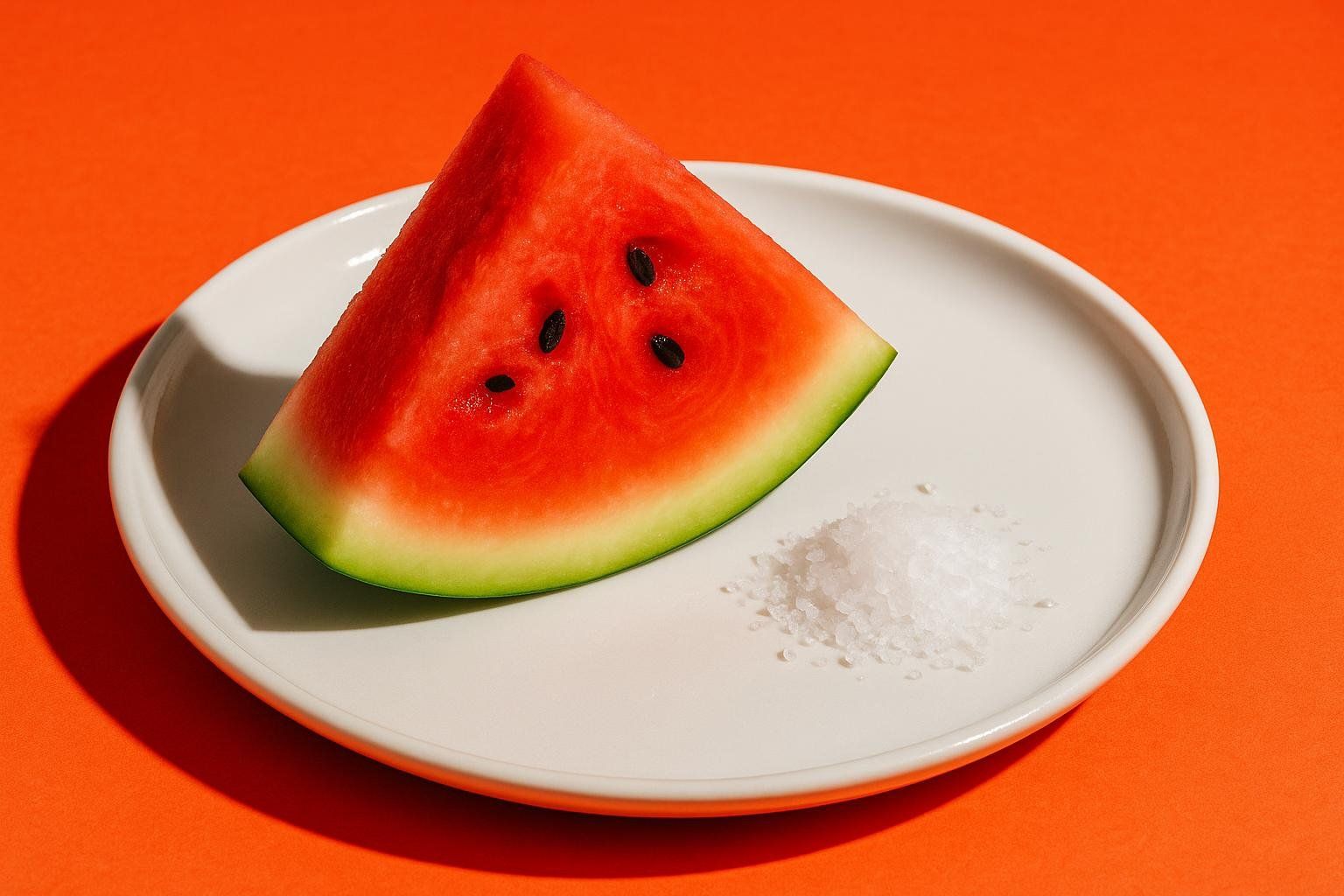
*Approximate timelines based on average gastric emptying and BHI data; individual rates vary.
Why Speed Matters: The Physiology of Rapid Rehydration
Even mild dehydration (≥ 2 % body-mass loss) can sap power output, spike perceived exertion, and impair cognitive function (Cleveland Clinic). Fast rehydration aims to accomplish two things:
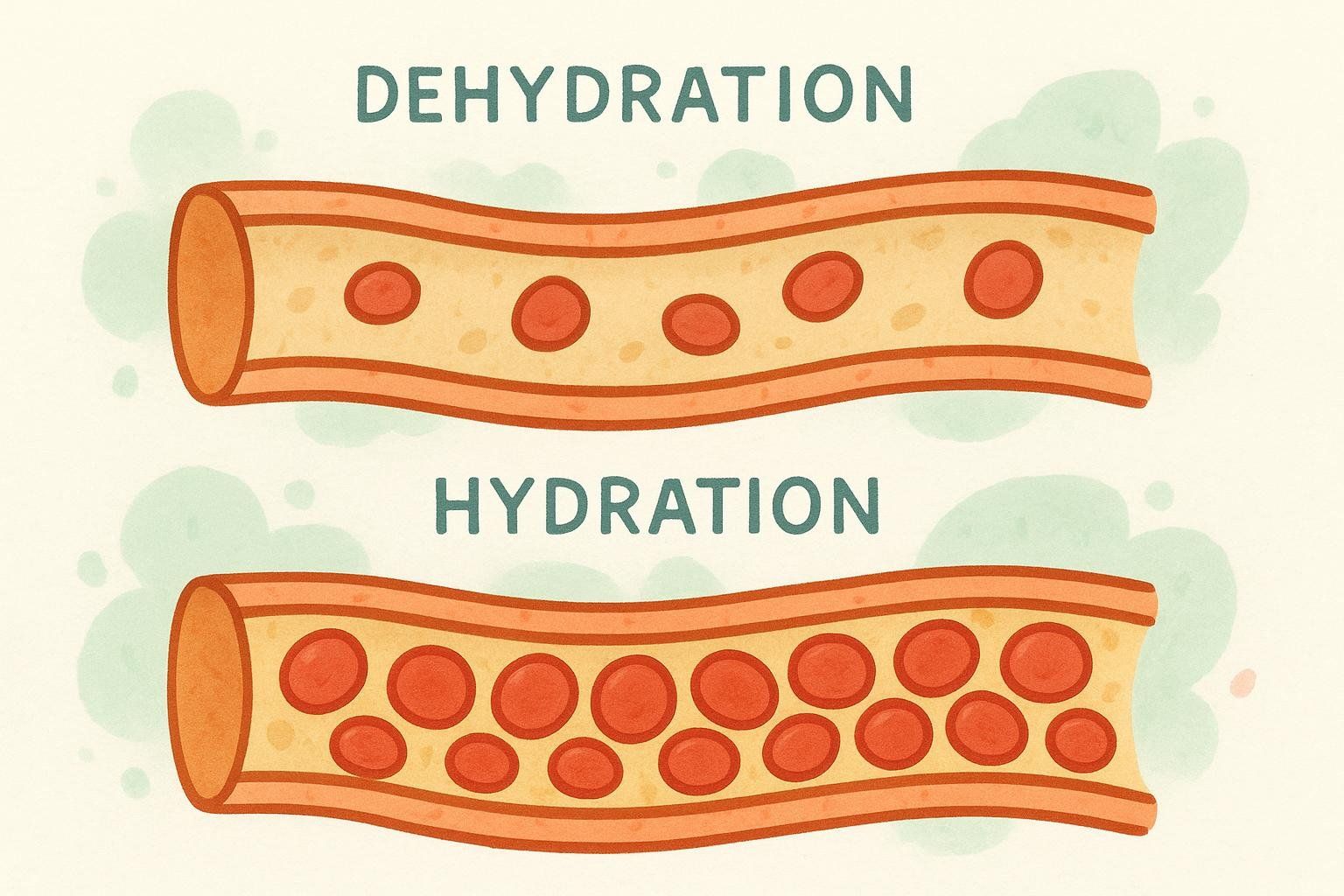
- Restore plasma volume. Blood volume drops as fluid shifts into cells and you lose sweat. Your heart compensates by beating faster—bad news for endurance or business meetings.
- Replenish electrolytes. Sodium, chloride, and potassium maintain the osmotic gradient that pulls water back into circulation. Skip them and you risk water remaining in the gut without being properly absorbed or, worse, hyponatremia.
Need an electrolyte refresher? Check out our primer, Understanding Electrolytes: Importance in Hydration.
The 0–120 Minute Rapid Rehydration Protocol
Minute 0–30 “Prime the Pump”
• Dose: 5–7 mL of fluid per kilogram of body weight (≈ 12–16 oz for a 150-lb/68-kg adult).
• Choice: WHO-style ORS* or a commercial packet (e.g., Liquid I.V., DripDrop).
• Why: The specific sodium–glucose ratio (≈ 75 mmol/L sodium, 13.5 g glucose per liter) exploits the SGLT1 transporter to drag water across the intestinal lining rapidly.
DIY option below if you don’t have a packet handy.
Minute 30–120 “Lock It In”
Continue hydrating at 3–5 mL/kg per hour using one of the following:
| Beverage | BHI (2 hr)* | Sodium (mg/500 mL) | Calories | Best For |
|---|---|---|---|---|
| Skim milk | 1.58 | 340 | 180 | Post-workout musculoskeletal repair |
| ORS | 1.54 | 1,050 | 100 | Ongoing GI losses (vomiting/diarrhea) |
| Isotonic sports drink (6–8 % CHO) | 1.10 | 300 | 120 | Hot-weather training |
| Coconut water | 0.74 | 60 | 90 | Light sweaters who need potassium |
| Plain water | 1.00 (reference) | 0 | 0 | Maintenance once electrolytes restored |
*BHI > 1.0 indicates better fluid retention than water.
Beyond 2 Hours “Return to Baseline”
By now most people have corrected mild–moderate dehydration. Stick to ad libitum water intake and balanced meals to address any remaining deficits.
DIY Oral Rehydration Solution (WHO Formula)
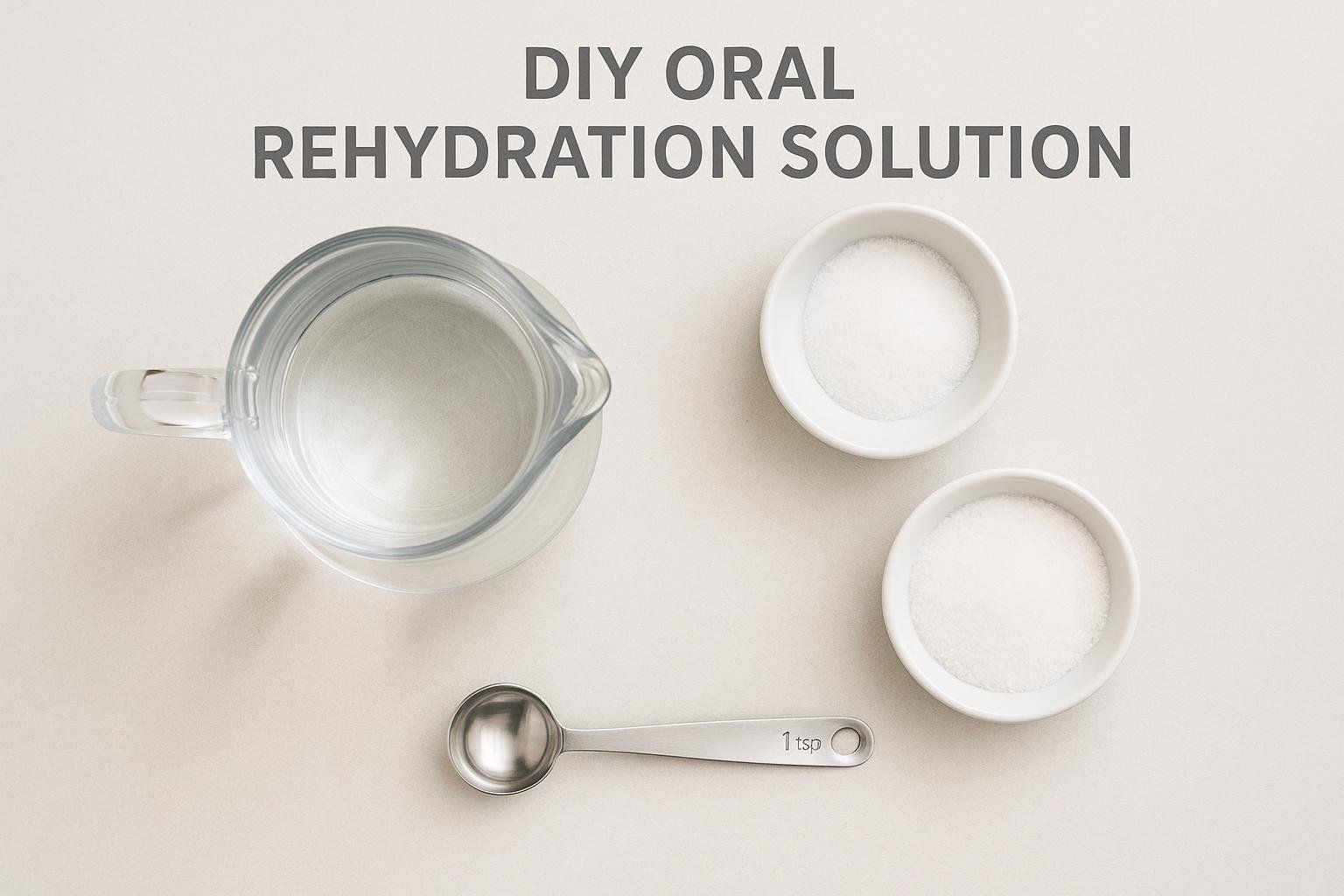
You can create an effective ORS at home using the following WHO-recommended formula:
| Ingredient | Amount |
|---|---|
| Clean water | 1 liter (about 4 cups) |
| Table salt (NaCl) | ½ teaspoon |
| Sugar | 6 level teaspoons (2 tbs) |
Stir until fully dissolved. Optional: add a squeeze of citrus or a no-calorie flavor packet. Use within 24 hours and refrigerate if possible (UVA Health).
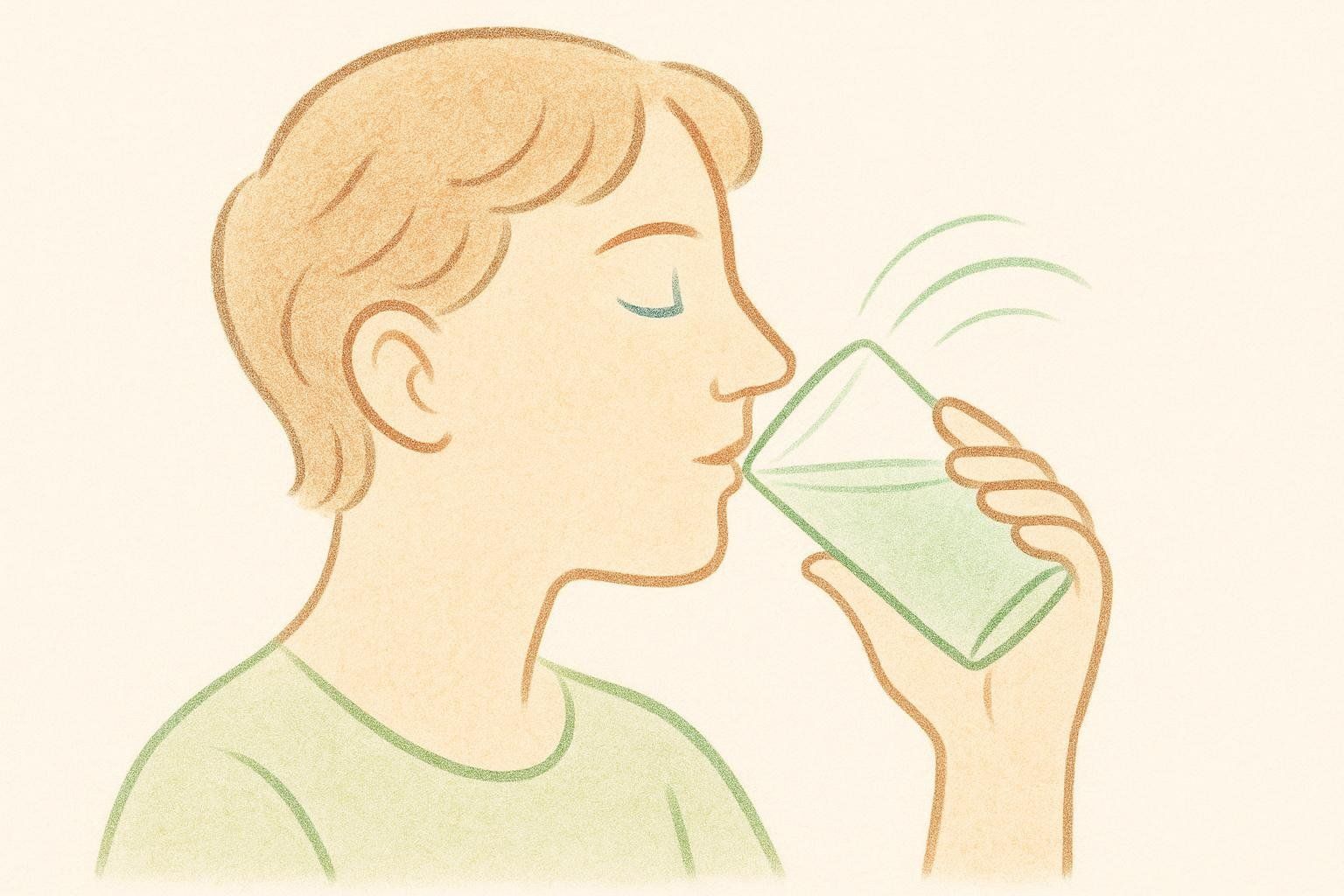
Safety tip: Chugging large volumes can dilute blood sodium. Sip consistently instead.
Fast Hydration Playbooks for Specific Situations
1. After a Hard Workout
• Weigh-in difference: Each pound (0.45 kg) lost = ~16 oz (475 mL) fluid deficit.
• Protocol tweak: Pair ORS with skim milk to hit protein + fluid targets—research shows milk’s electrolyte-protein combo aids muscle recovery and fluid retention.
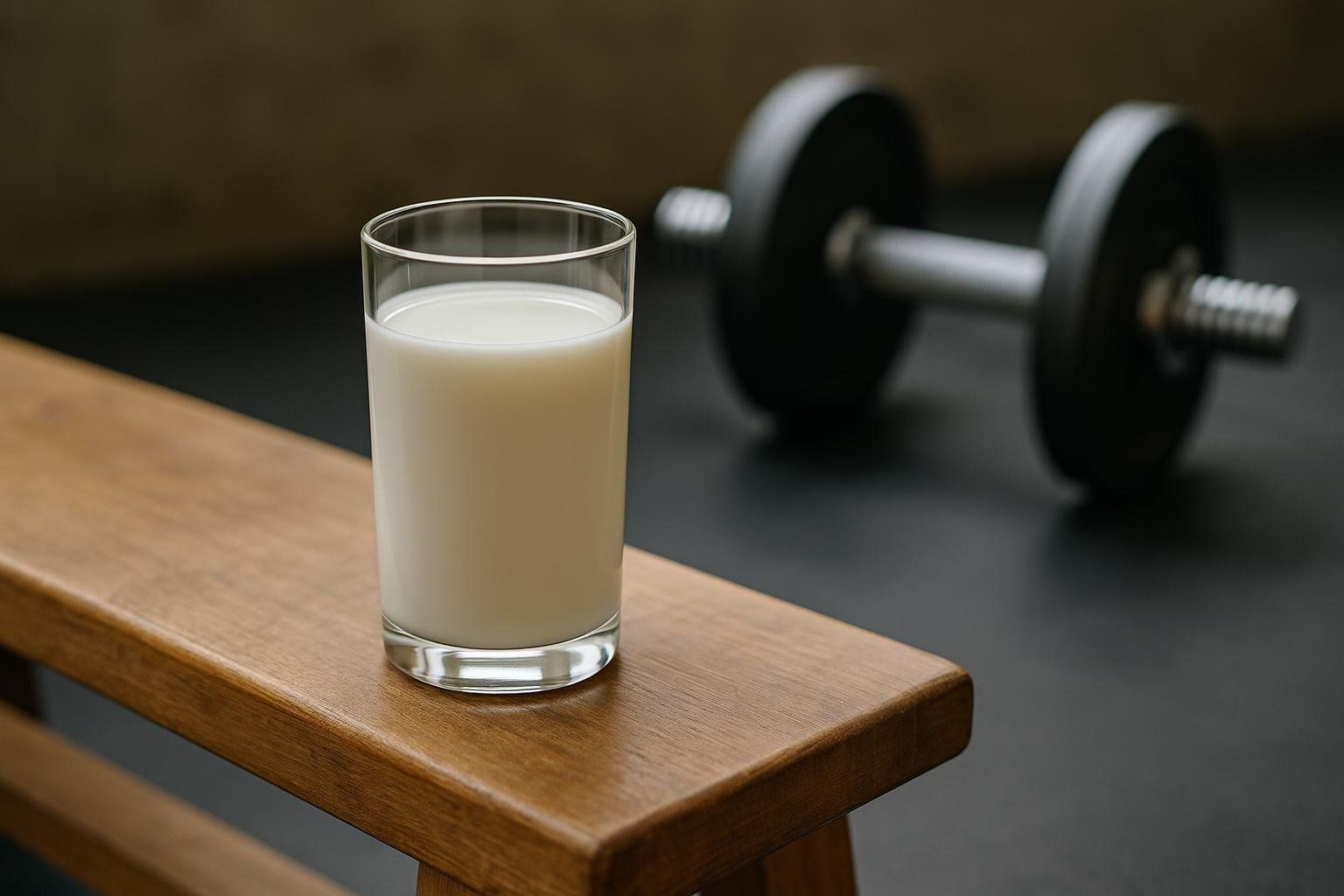
For a deeper dive on training hydration, see Hydration Strategies for Endurance Athletes.
2. On a Long Flight or Road Trip
Dry cabin air can contribute to a loss of nearly 1 L of water over five hours (Real Simple). Pack ORS single-serve sticks and an empty bottle to mix with cabin service water. Skip alcohol until you land.
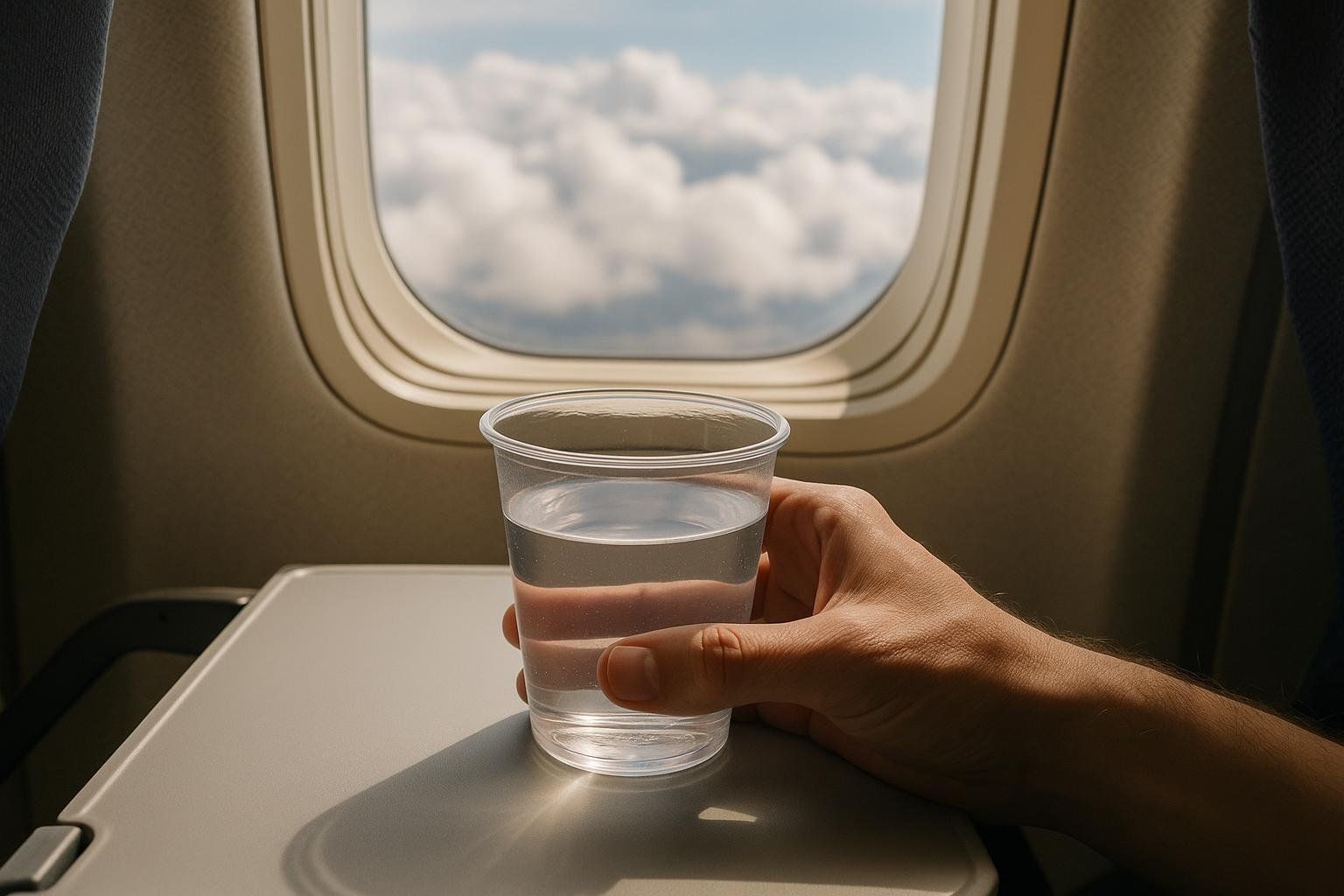
3. The Morning After (Hangover Recovery)
Alcohol inhibits antidiuretic hormone, leading to fluid loss. Alternate 250 mL of ORS with small carb-rich snacks (toast, banana) to replenish liver glycogen and electrolytes. Most symptoms ease once plasma volume rebounds (~ 1–2 hr).
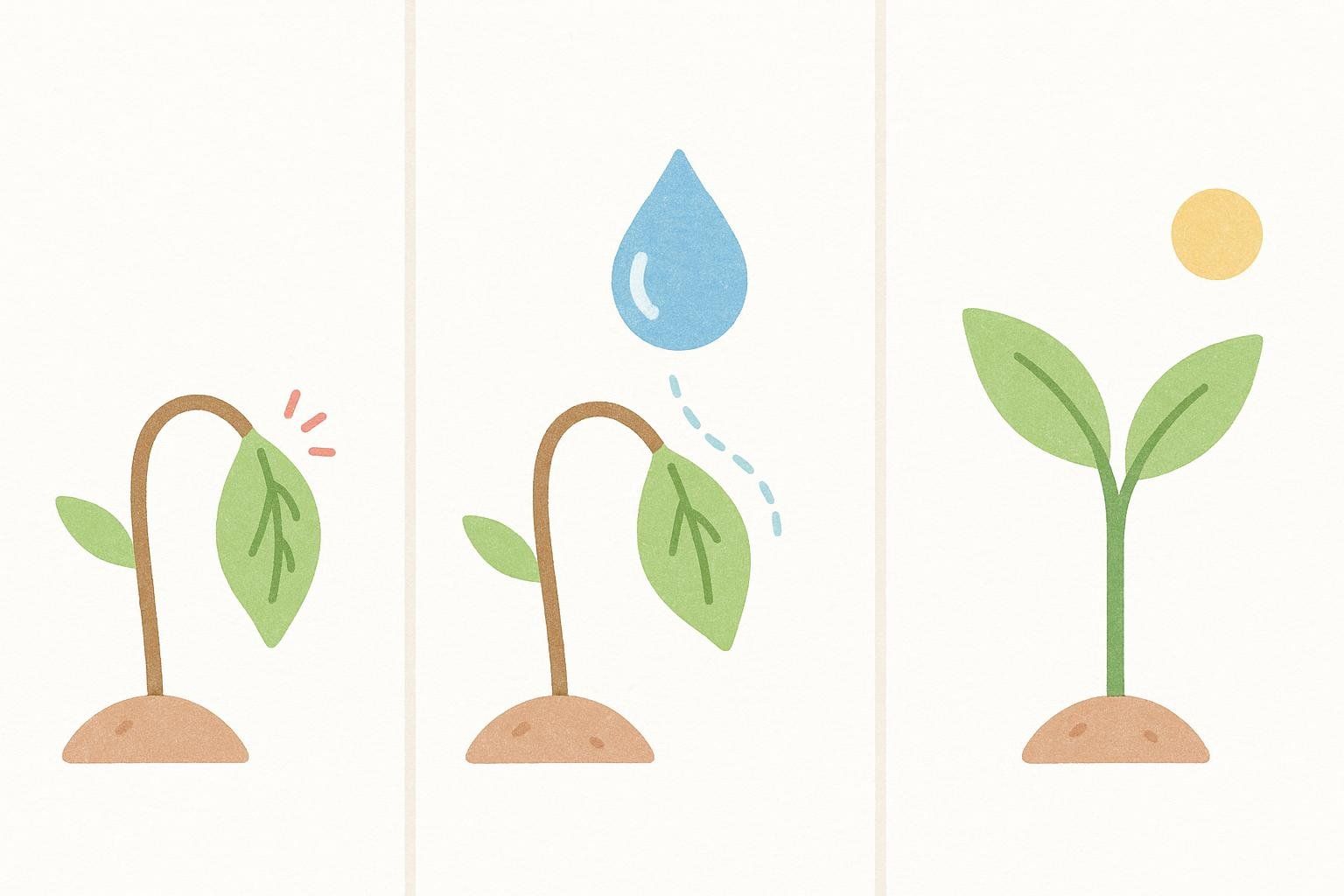
Key Takeaways
- Electrolytes + water = speed. ORS or milk hydrates faster than plain water.
- Think timelines. Front-load the first 30 minutes, then maintain for 2 hours.
- Customize by context. Your post-race plan isn’t the same as your hangover SOP.
Turn Hydration Data into Action
Join our science-packed newsletter for evidence-based tips—then solidify your progress with a DEXA scan. The scan measures your Total Body Water baseline alongside fat, muscle, and bone metrics, giving you concrete feedback on how your hydration strategy shapes overall body composition.
